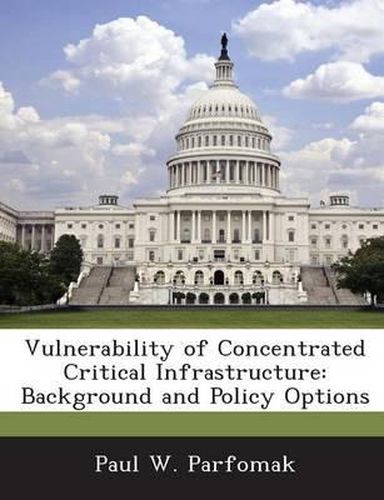Readings Newsletter
Become a Readings Member to make your shopping experience even easier.
Sign in or sign up for free!
You’re not far away from qualifying for FREE standard shipping within Australia
You’ve qualified for FREE standard shipping within Australia
The cart is loading…






Critical infrastructure consists of systems and assets so vital to the United States that their incapacity would harm the nation’s physical security, economic security, or public health. Critical infrastructure is often geographically concentrated, so it may be distinctly vulnerable to events like natural disasters, epidemics, and certain kinds of terrorist attacks. Disruption of concentrated infrastructure could have greatly disproportionate effects, with costs potentially running into billions of dollars and spreading far beyond the immediate area of disturbance. Hurricanes Katrina and Rita demonstrated this kind of geographic vulnerability by disrupting a substantial part of the U.S. energy and chemical sectors in 2005. Congress has been examining federal policies related to the geographic concentration and vulnerability of critical infrastructure. In the 109th Congress, the Energy Policy Act of 2005 (P.L. 109-58) facilitated the construction of new liquefied natural gas import terminals in diverse ports. Provisions in the Pipeline Safety Improvement Act of 2006 (P.L. 109-468) require studies to identify geographic areas in the United States where unplanned loss of oil pipeline facilities may cause oil shortages or price disruptions. The 110th Congress is overseeing implementation of these measures and considering additional policies to address concerns about infrastructure concentration. Geographic concentrations of U.S. critical infrastructure typically have developed through some combination of market influences including resource location, agglomeration economies, scale economies, community preferences, and capital efficiency. Congress and federal agencies also have adopted policies affecting the capacity and location of critical infrastructure, including prescriptive siting, economic incentives, environmental regulation, and economic regulation.
$9.00 standard shipping within Australia
FREE standard shipping within Australia for orders over $100.00
Express & International shipping calculated at checkout
Critical infrastructure consists of systems and assets so vital to the United States that their incapacity would harm the nation’s physical security, economic security, or public health. Critical infrastructure is often geographically concentrated, so it may be distinctly vulnerable to events like natural disasters, epidemics, and certain kinds of terrorist attacks. Disruption of concentrated infrastructure could have greatly disproportionate effects, with costs potentially running into billions of dollars and spreading far beyond the immediate area of disturbance. Hurricanes Katrina and Rita demonstrated this kind of geographic vulnerability by disrupting a substantial part of the U.S. energy and chemical sectors in 2005. Congress has been examining federal policies related to the geographic concentration and vulnerability of critical infrastructure. In the 109th Congress, the Energy Policy Act of 2005 (P.L. 109-58) facilitated the construction of new liquefied natural gas import terminals in diverse ports. Provisions in the Pipeline Safety Improvement Act of 2006 (P.L. 109-468) require studies to identify geographic areas in the United States where unplanned loss of oil pipeline facilities may cause oil shortages or price disruptions. The 110th Congress is overseeing implementation of these measures and considering additional policies to address concerns about infrastructure concentration. Geographic concentrations of U.S. critical infrastructure typically have developed through some combination of market influences including resource location, agglomeration economies, scale economies, community preferences, and capital efficiency. Congress and federal agencies also have adopted policies affecting the capacity and location of critical infrastructure, including prescriptive siting, economic incentives, environmental regulation, and economic regulation.